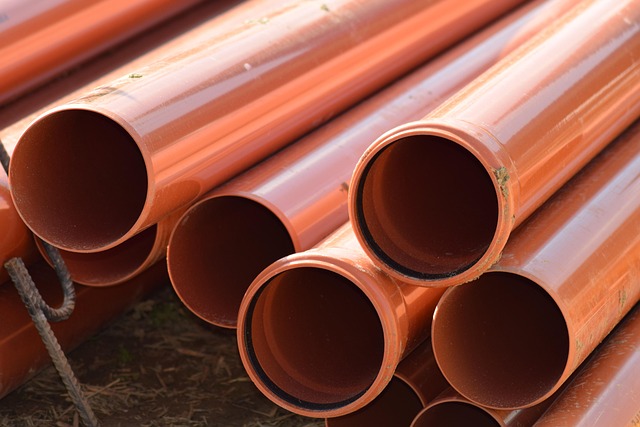Hydro excavation potholing is a safe, effective, non-destructive method for excavating around underground utilities before repair or construction projects. Using high-pressure water and vacuum systems, it gently removes soil without damaging pipes, cables, and wires. Compared to traditional methods, hydro excavation reduces utility strikes, minimizes site disruptions, enables precise digging, expedites project timelines, saves costs, and enhances worker safety. This technology is transforming pothole digging in both urban and rural areas, with faster digging times, reduced physical labor, enhanced operator safety, and clean, narrow potholes. In urban settings, it prioritizes traffic flow and pedestrian safety; in rural areas, it's space-efficient, environmentally friendly, and ideal for narrow roads. Case studies show its benefits in remote road rehabilitation projects, underscoring its versatility and advantages in diverse construction scenarios.
In the ever-evolving landscape of infrastructure maintenance, safe and efficient pothole repair is paramount. This article delves into the world of hydro excavation potholing, a revolutionary method that offers both precision and safety for urban and rural projects alike. From understanding the fundamentals of hydro excavation to exploring cutting-edge technology and best practices, we provide insights into successful implementations, highlighting the benefits this innovative approach brings to diverse environments.
Understanding Hydro Excavation Potholing: A Safe and Effective Method
Hydro excavation potholing, also known as hydrovac potholing, is a safe and effective method for excavating around underground utilities before initiating pothole repair or construction projects. This non-destructive technique utilises high-pressure water and a vacuum system to gently remove soil and debris from the area surrounding sensitive infrastructure like pipes, cables, and wires. By carefully controlling the excavation process, hydro excavation ensures minimal damage to these critical utilities, making it a preferred choice for both urban and rural projects.
Compared to traditional mechanical potholing methods, hydro excavation offers numerous advantages. It reduces the risk of utility strikes, minimizes site disruptions, and allows for precise, controlled digging. This not only expedites project timelines but also contributes to cost savings and enhances overall safety for workers and surrounding communities.
Equipment and Technology: Unlocking Efficient Pothole Digging
Equipment and technology play a pivotal role in making pothole digging safe and efficient, especially for urban and rural projects that demand precision and minimal damage to surrounding infrastructure. One such innovative method is hydro excavation potholing, which utilizes high-pressure water jets to loosen soil while a vacuum system sucks up the resulting slurry. This non-destructive approach allows for precise excavation without damaging underground utilities, making it ideal for areas with complex utility layouts.
Hydro excavation equipment offers numerous advantages, including faster digging times, reduced physical labor, and enhanced operator safety. The technology’s ability to create clean, narrow potholes minimizes the need for additional material and labor, thereby increasing project efficiency and reducing overall costs. As urban and rural areas continue to expand, embracing such advanced techniques ensures that pothole repair and maintenance are carried out swiftly, effectively, and with minimal disruption to local communities.
Best Practices for Urban and Rural Settings
When it comes to potholing, both urban and rural environments present unique challenges. For urban settings, best practices focus on minimizing disruption to traffic flow and pedestrians while ensuring safety for construction crews. Hydro excavation potholing is a highly effective method in these areas due to its non-invasive nature. It involves using high-pressure water and a vacuum system to excavate, reducing the need for heavy machinery that could damage underground infrastructure. This technique also allows for precise hole placement, limiting the impact on nearby buildings and roads.
In rural environments, the focus shifts to accessibility and environmental considerations. Hydro excavation is particularly advantageous as it requires less space compared to traditional methods, making it ideal for narrow country roads. Additionally, its environmentally friendly approach minimizes soil disturbance, preserving natural landscapes. Proper planning, including assessing site conditions and obtaining necessary permits, is crucial in rural areas to ensure efficient potholing operations without causing long-term ecological damage.
Case Studies: Successful Implementation and Benefits Realized
In recent years, urban and rural infrastructure projects have significantly benefited from the adoption of hydro excavation potholing. This non-destructive excavation method has proven to be a game-changer in various case studies worldwide. For instance, a rural road rehabilitation project in a remote area faced challenges with traditional potholing techniques due to difficult terrain and limited accessibility. By employing hydro excavation, crews were able to efficiently locate and expose underground utilities without causing damage, ensuring the safety of nearby residents and vital infrastructure. The method’s precision and minimal ground disturbance made it ideal for this challenging landscape.
The successful implementation of hydro excavation potholing in this project led to several benefits. It significantly reduced project timelines, minimizing disruptions to local traffic and businesses. Moreover, the technique’s environmental friendliness, as compared to traditional methods, contributed to a positive public perception. Case studies like these highlight the versatility and advantages of hydro excavation potholing across diverse construction scenarios, solidifying its position as an efficient and safe solution for urban and rural infrastructure development.
Hydro excavation potholing has established itself as a safe, efficient, and versatile solution for urban and rural pothole repair. By understanding the technology, utilizing best practices, and leveraging case studies, organizations can significantly enhance their road maintenance programs. This method’s ability to swiftly locate underground utilities while minimizing damage makes it an invaluable asset in today’s infrastructure management landscape. Embracing hydro excavation ensures safer streets, reduced disruptions, and more cost-effective pothole mitigation for communities worldwide.
